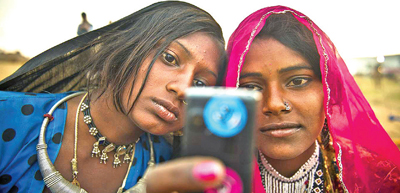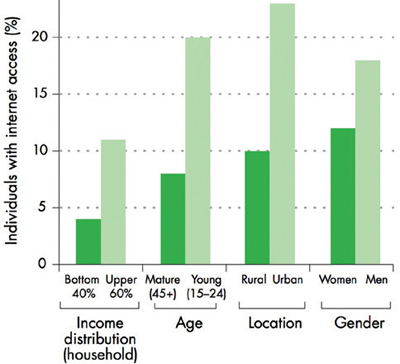
Corporate Citizen Claps For Wildlife Warriors Aditya And Poonam Singh, The Eco-Couple Who Have Converted Their Private Plot Into A Lush Green Jungle, A Haven For Wild Boars, Tigers And Deer

A small (barren) land investment some 20 years ago, adjoining Rajasthan’s famous Ranthambore Tiger Reserve (RTR) has now bloomed into a forest reserve. It was not a fancy idea initially; all they did was put a fence around their plot and forgot about it which allowed the forest to grow back naturally. The Delhi couple bought more land in the adjoining area and converted it into a 35-40 acres sanctuary worth INR 1 crore; the private forest is now complete with naturally entrenched waterholes for wild animals that populate the reserve. Despite receiving lucrative deals, they have resisted land sharks in their quest to preserve nature. Aditya, a keen photographer and a nature lover quit civil services and moved to Rajasthan’s Sawai Madhopur and the proximity of their plot to the RTR prompted his spouse Poonam Singh to open their tourist resort. Unlike other tourism projects that vie for unrestricted access into the wild areas, the Singh’s gradually bought land parcels in the neighbouring area bordering the RTR. “The area is called Bhadlav, adjacent to the Ranthambore reserve and was visited by predators like tigers who used to come for prey. As a result, farmers were selling their land,” said Singh. He proposes to buy more land adjacent to the agriculture field next to his land. Their project has prevented predators like tigers from the RTR zone from venturing into and damaging local fields. “It is because the animals understand that in this forest patch (Singh’s), they get prey, water and safe shelter without any disturbance,” he said. The couple’s initiative has helped the authorities in achieving a small part of the State’s green belt plan of acquiring forest land, the size of Ireland in the last 30 years. The couple’s proposed project of a new homestay will be powered by solar and wind energy, also featuring two small water holes for animals during the extreme summers. A bright spot indeed for bringing home the tiger!
Corporate Citizen Slaps The Ever-Deepening Digital Divide; Leading To Knowledge And Societal Divide Amongst India’s Young Women Across Poor Sections


With online learning gaining new grounds, young women have been struck with more societal dogmas in their aspirations to own a mobile phone. Backing this theory is a recent Harvard study on women’s barriers to mobile phone usage in India found that India’s gender gaps in technology access are unique and much larger than countries with similar levels of development. Interestingly, while mobile phones have gained prominence across low-income groups, young women are not allowed to use them because of the fear that they may interact with boys which stands a stigma to society’s double standards slapped on them. According to the Harvard study, 71% of men in India own mobile phones as against 38% of women and this access remains curtailed even when their brothers and households owned such devices. Sadly, other ethnographic studies have associated women’s use of mobile phones to a rise in divorce rate, elopement and the perception of mobiles making women users as “sluts”! The Harvard study also showed that women are more likely to refer to technical illiteracy and lack of confidence in using electronic devices. They found that “women lag behind men with relative gaps growing with task sophistication.” While the relative gap is around 15–20% for making and receiving calls, the gender gap widens to 51% for executing a simple SMS feature, increasing to above 60% for more complex activities related to social media usage. A study on Bengaluru slums that examined the acceptability of mobile text messages for promoting mental health amongst women in India, found that male family members of nearly half the participants called back to check on who was sending them messages, despite getting prior approvals from their parents. Education is crucial for women empowerment and the growing technological gender and class divide negates the painstaking efforts of past endeavours towards gender equality. Will the National Digital Communications Policy deliver the difference?